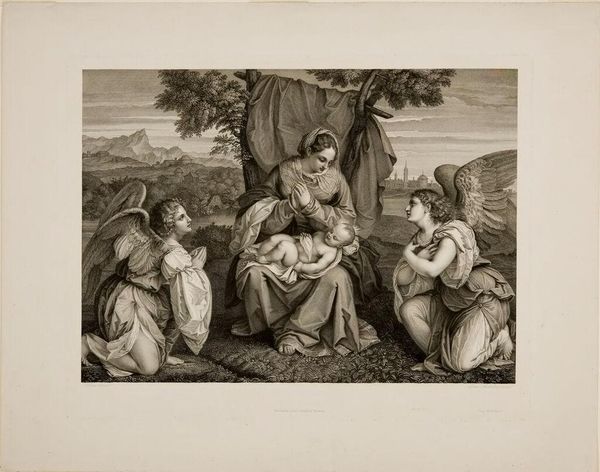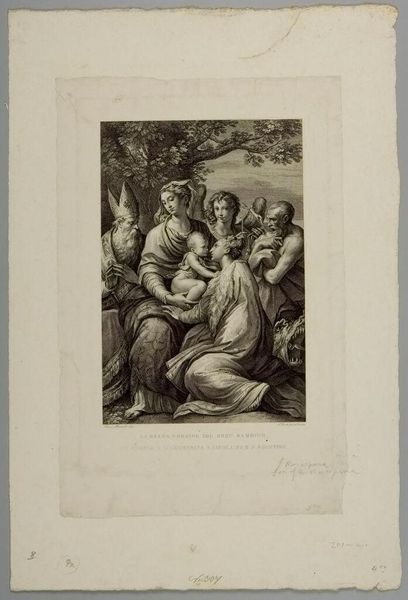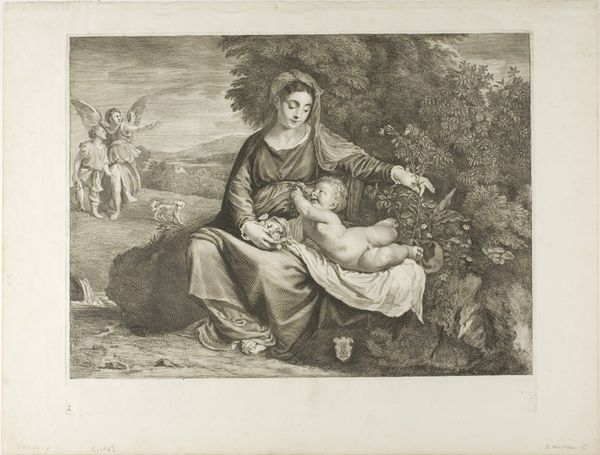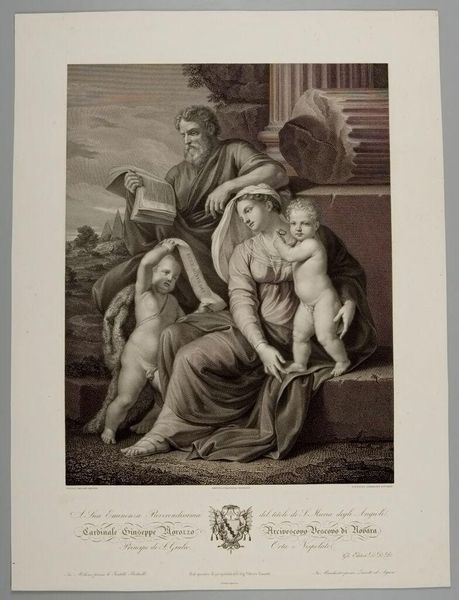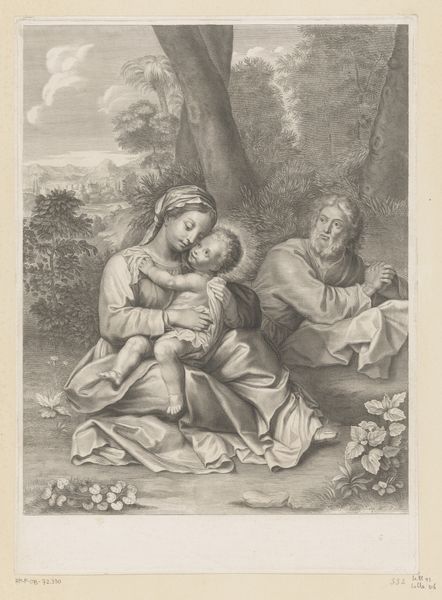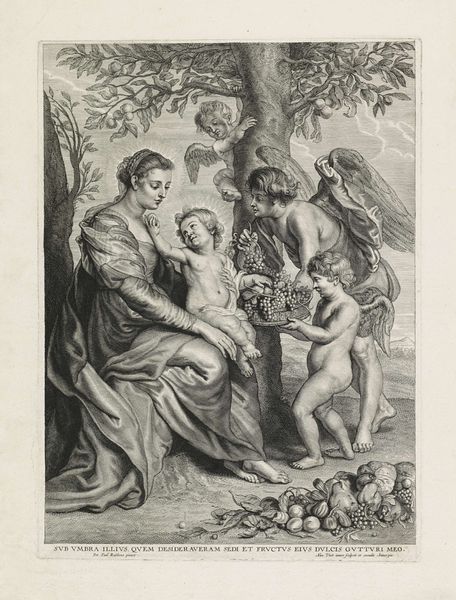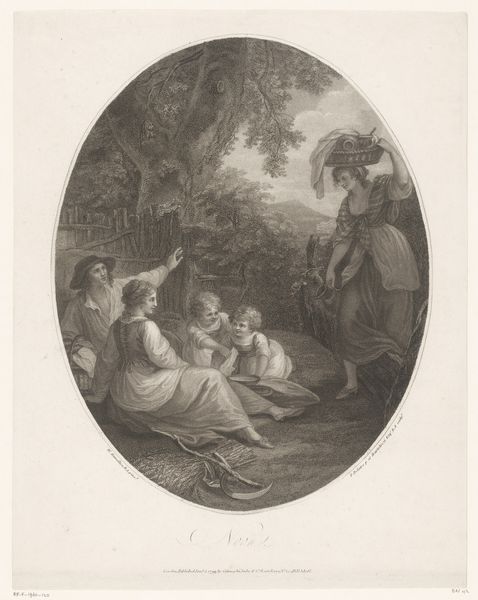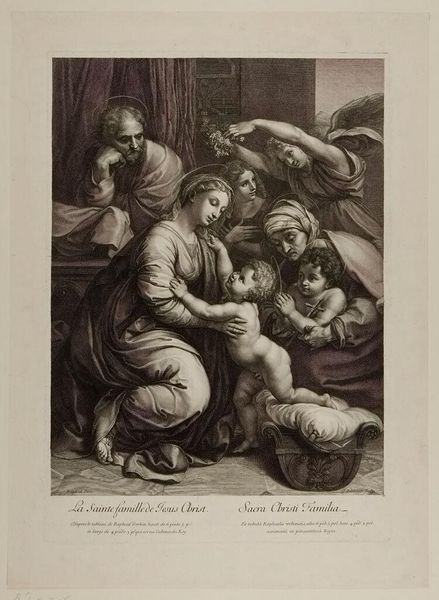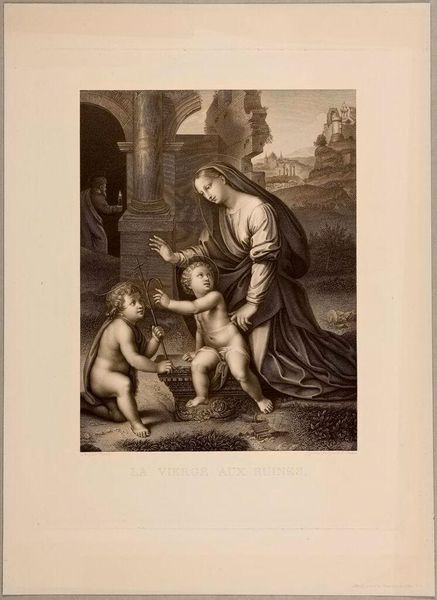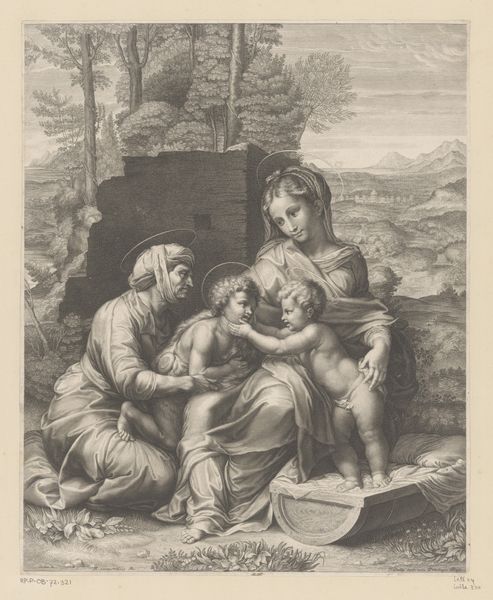
tempera, print, engraving
#
neoclacissism
#
tempera
# print
#
landscape
#
charcoal drawing
#
figuration
#
limited contrast and shading
#
portrait drawing
#
history-painting
#
engraving
Dimensions: height 430 mm, width 550 mm
Copyright: Rijks Museum: Open Domain
Editor: We're looking at "Maria met Kind in landschap tussen twee engelen," or "Mary with Child in a Landscape Between Two Angels," an engraving by Pietro Anderloni from the late 18th to mid-19th century. It’s serene but quite formal. I’m curious, what strikes you most about this piece? Curator: I find myself immediately drawn to the printmaking process. Engraving, as a form, allowed for wide dissemination of religious imagery. It became a crucial tool in shaping popular devotion and moral values. Anderloni is not only creating an image; he's participating in a system of cultural production and reproduction, isn't he? How does the accessibility of the print medium influence the meaning for you? Editor: That's a good point. I guess the act of replication makes it more of a mass produced commodity rather than a precious, one-of-a-kind object. So, how does the materiality—the engraving itself—impact the interpretation of such a traditional religious subject? Curator: Precisely! Think about the labor involved in creating the plate, the repetitive act of printing, and its implications. While it evokes Neoclassical ideals, let's not overlook its function within broader economic structures. What social strata would consume this, and why would they choose a print over an original painting? Editor: It probably served a didactic purpose, especially for those who couldn’t afford original artwork, providing moral instruction through widely available and reproducible images. It’s fascinating to consider the socio-economic dimensions inherent in even a seemingly simple religious print. Curator: Absolutely. The availability challenges traditional notions of art's aura. Reflecting on the means of production reshapes our understanding, it seems. Editor: Definitely! Looking at it from that perspective, the image becomes less about divine inspiration and more about the mechanics of cultural influence. Thank you!
Comments
No comments
Be the first to comment and join the conversation on the ultimate creative platform.
